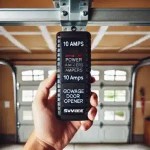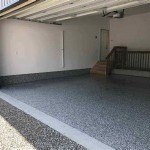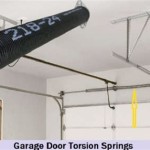How Deep Should Garage Cabinets Be?
Garage cabinets are a crucial element in maximizing storage space and maintaining organization. A critical aspect of their effectiveness lies in their depth. Choosing the right depth ensures efficient use of space while maintaining accessibility. This article explores the various factors influencing the optimal depth for garage cabinets, addressing common storage needs and providing practical guidance for homeowners.
Standard Garage Cabinet Depths
Standard garage cabinets are typically available in depths of 12, 18, and 24 inches. Twelve-inch deep cabinets are suitable for smaller items like cleaning supplies, paint cans, and hand tools. Eighteen-inch deep cabinets accommodate larger items, making them a versatile option for general storage. Twenty-four-inch deep cabinets provide ample space for bulky items, including power tools, sporting goods, and storage bins. Selecting the appropriate depth necessitates careful consideration of the items intended for storage.
Matching Depth to Stored Items
The primary determinant of cabinet depth is the size and type of items to be stored. Measuring the largest items intended for storage will provide a baseline for determining the minimum required depth. Adding a few inches to this measurement allows for easier access and maneuvering within the cabinet. For example, if the largest item is 15 inches deep, an 18-inch deep cabinet would be a more practical choice than a 12-inch cabinet.
Garage Size and Layout Considerations
The overall size and layout of the garage also influence the appropriate cabinet depth. In smaller garages, shallower cabinets can help maximize floor space and maintain maneuverability. Deeper cabinets, while offering more storage, might impede movement and create a cramped environment. Conversely, larger garages can often accommodate deeper cabinets without compromising functionality. Careful planning and consideration of the available space are crucial for optimizing cabinet placement and depth.
Wall-Mounted vs. Floor-Standing Cabinets
The type of cabinet, whether wall-mounted or floor-standing, also impacts the depth selection. Wall-mounted cabinets are generally shallower to prevent them from protruding excessively and obstructing movement. Floor-standing cabinets, with their broader base, can support greater depths, offering more substantial storage capacity. The choice between wall-mounted and floor-standing cabinets depends on the specific storage needs and available wall and floor space.
Optimizing Storage for Specific Items
Certain items require specific considerations regarding cabinet depth. For example, storing long-handled tools like shovels and rakes often requires deeper cabinets or specialized configurations. Similarly, storing power tools and equipment may necessitate deeper cabinets to accommodate their size and weight. Planning for these specific needs ensures efficient and safe storage.
Material Thickness and Usable Space
The material thickness of the cabinet itself impacts the usable interior space. While the external dimensions might measure 24 inches, the actual usable depth might be slightly less due to the thickness of the cabinet walls. This factor is particularly relevant for deeper cabinets, where the material thickness can noticeably reduce the usable depth.
Accessibility and Ergonomics
While maximizing storage space is essential, maintaining accessibility and ergonomic principles is equally crucial. Excessively deep cabinets can make it difficult to retrieve items stored at the back. Consider using pull-out shelves or drawers within deeper cabinets to enhance accessibility and prevent items from getting lost or forgotten. This improvement contributes to a more organized and functional garage space.
Balancing Depth with Functionality
The optimal depth for garage cabinets balances storage capacity with practical functionality. Choosing cabinets that are too deep can lead to wasted space and difficulty accessing stored items. Conversely, cabinets that are too shallow may not accommodate larger items, necessitating alternative storage solutions. Careful planning and assessment of storage needs are essential for striking the right balance between depth and functionality.
Cost Considerations
Deeper cabinets typically come at a higher cost due to the increased material usage. Budgetary constraints may influence the choice of cabinet depth. While deeper cabinets offer more storage, they might not always be the most cost-effective solution. Evaluating storage needs and budget limitations will help determine the most suitable and affordable cabinet depth.

How To Buy Garage Storage Cabinets Step 7 Design A Layout For Your Using Standard Cabinet Dimensions Vault Custom

How To Buy Garage Storage Cabinets Step 7 Design A Layout For Your Using Standard Cabinet Dimensions Vault Custom

Diy Garage Base Cabinets Plans Fix This Build That

Garage Storage Concepts Optimizing Your Layout Vault Custom Design

Easy Diy Garage Cabinets Angela Marie Made

24 Wide 90 Or 80 Tall 20 Deep 1 Door Garage Cabinet 3 Shelves A Better Design

Easy Diy Garage Cabinets Angela Marie Made

How To Build Garage Cabinets

Garage Cabinet Depth The Journal

Garage Cabinets Diy Wooden Storage Install Guide
Related Posts








